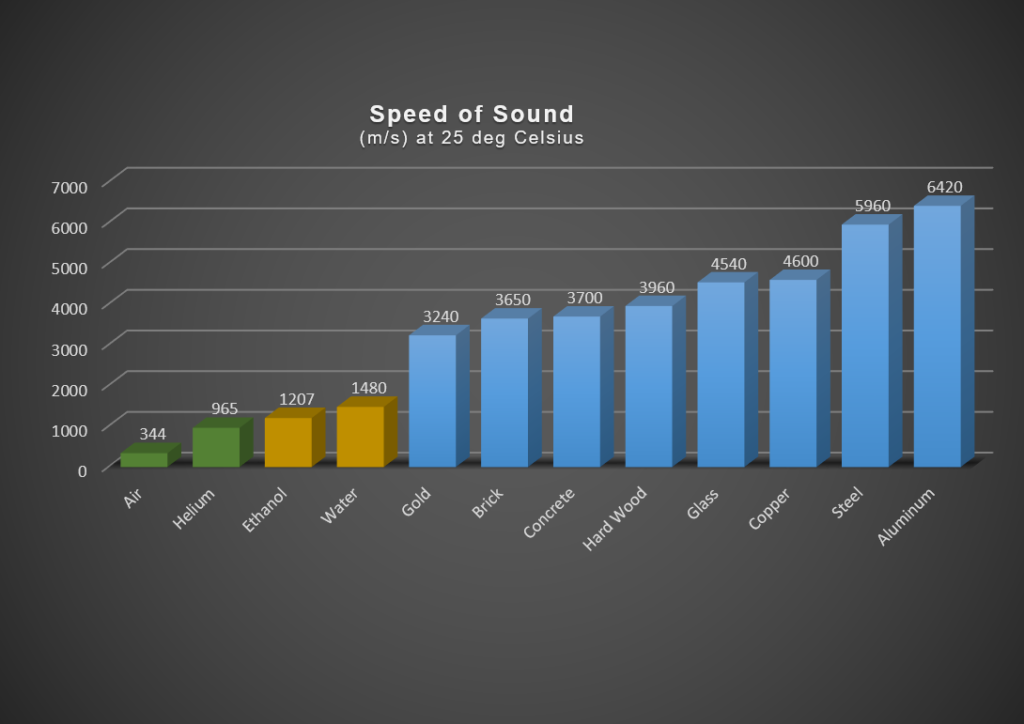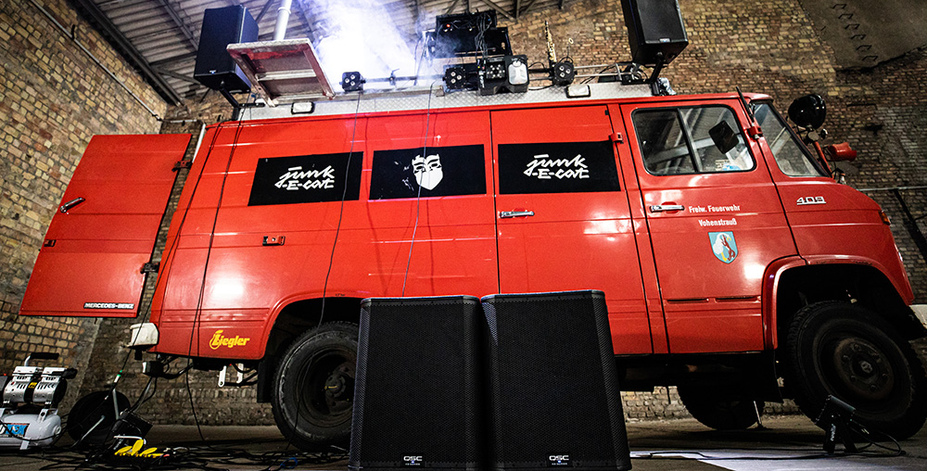You may remember from your science classes in school that the speed of sound is a constant, but this statement is entirely dependent on the material through which sound is propagating. Different medium transmit sound at very different speeds. So, let’s look at some typical materials that most people would encounter in indoor live sound settings, before investigating how to minimize such undesirable sound propagations through structures.
Sound Propagation
Sound is a form of energy produced and transmitted by vibrating matter. Low frequency sound waves caused by such vibrations move through a medium (solid, liquid or gas) in all directions from their source and can be described by the wavelengths and frequencies of such waves. However, it is the medium that vibrates back and forth and transfers the energy, as the medium itself is not carried along with the sound waves.
What is Acoustic Transmission?
Acoustic transmission occurs when sound waves propagate and pass through a barrier or a material, resulting in noise on both sides of the barrier. Acoustic transmission poses a number of problems in any live sound application, where sound from the performance/venue transfers from one room to the next and within a building, creating nuisances for neighbors and people living nearby.
Dense materials are able to block most acoustic transmission for high, medium and low-mid frequencies. However, at low and very low frequencies (with wavelengths of many meters/feet below 100 Hz) sound waves are able to propagate through buildings, as buildings’ structures and materials start to vibrate, and the higher the speed of sound, the most effective is the low frequency propagation!
Different Materials Implies Different Speed of Sound
To understand better what happens when sound waves propagate through materials, first let’s recall that sound wave propagation involves the transfer of kinetic energy between adjacent molecules. The closer molecules are to each other, the faster sound travels. This means that sound travels much faster through solids than through liquids or gas, which have their molecules the farthest apart.
A second aspect is the elastic property of a material. Materials with higher elastic properties return to their normal shape faster, making it easier for sound to travel through them. This is why sound travels much faster through steel, for example, than rubber, which has very low elastic properties and a speed of sound of 60 m/s.
Indoor Live Sound Settings and Environments
If the quality of any live sound performance is highly dependent on room acoustics, at low frequencies specifically, the propagation of bass energy across the venue structure is not negligible. The most common construction materials that we encounter in live sound settings are: reinforced concrete (with inner steel framing), bricks, gypsum board (single or multi-layered), wood (planks, plywood boards, beams, doors, house framework, etc) and of course glass (windows, winter garden, etc). The list is surprisingly short. Looking at the speed of sound in these solids (see Figure 1), we observe they range between 3600 m/s and 6000 m/s (10 to 17 times faster than in air!).
Even though typical dense materials (concrete or brick walls) block acoustic transmission efficiently, their inherent high speed of sound characteristics allow for efficient sound propagation across structures. The question is now what to do to mitigate sound propagation?

How to Minimize Sound Propagation through Buildings?
As mentioned, the most problematic sound propagation across structures occurs at low and very-low frequencies (typically below 100 Hz). Here are a few tips to minimize such sound propagation in typical indoor live sound settings:
- If you are using large, stand-mounted full-range loudspeakers reproducing a decent amount of low frequencies, try using stable and sturdy stands that feature large rubber feet. As you read, rubber is an excellent material to mitigate sound propagation.
- When using subwoofers – and possibly full-range loudspeakers – try placing them away from lightweight doors, windows, wooden or movable partitions and prefer the vicinity to dense, heavy walls. For that matter, stone-walls propagate sound very little compared to concrete, which most always incorporates steel.
- Also, make sure you do not overdrive subwoofers and end up with low frequency levels that are louder than necessary. A reasonable balance between main loudspeakers and subwoofers’ level is always best. You may find the blog on Setting Subwoofer Level correctly in your PA System a useful read.
- Before going to the venue, make sure you carry with you enough rubber pads (at least 2.5 cm/1 in thick) that you will place below each subwoofer enclosure, and each large loudspeaker stand, to try further decouple each enclosure and stand from the floor. KS Series active subwoofers already feature four large rubber feet on two sides of their enclosure to address this specific issue. But having extra rubber pads can always come handy and help further minimize sound propagation.
- Minimizing the amount of low frequency energy in the room is always a good preventive measure as less energy is likely to be transmitted across the building. To do so, try using cardioid subwoofers such as the dual 12-inch KS212C or a minimum of two KS118 single 18-inch subwoofers in cardioid mode. Their 15 dB rear attenuation means that there is much less energy radiated in the room from the rear of the subwoofer setup compared to standard omnidirectional subwoofer radiation. Here is another blog to learn How to correctly position multiple Subwoofers for Cardioid Deployment.
Conclusion
The speed of sound is a constant that is entirely dependent from the material across which sound is transmitted through, and different medium transmit sound at very different speed. Even if solid, dense materials, such as concrete or brick walls, do block acoustic transmission efficiently, the fact that the speed of sound in such materials is more than ten times faster than in air, results often in efficient – usually unwanted – propagation of sound across structures.
When setting up PA systems for indoor live sound performances, remember to take into considerations the few tips provided in this article to try to minimize low frequency disturbances to people not invited to the party! Happy listening to all others!
Christophe Anet
Latest posts by Christophe Anet (see all)
- History, Development and Applications of Column Loudspeakers - May 30, 2025
- Why is Dynamic Range so important? - May 30, 2023
- Differences between Flown and Floor-Mounted Subwoofer Deployments - May 2, 2023
